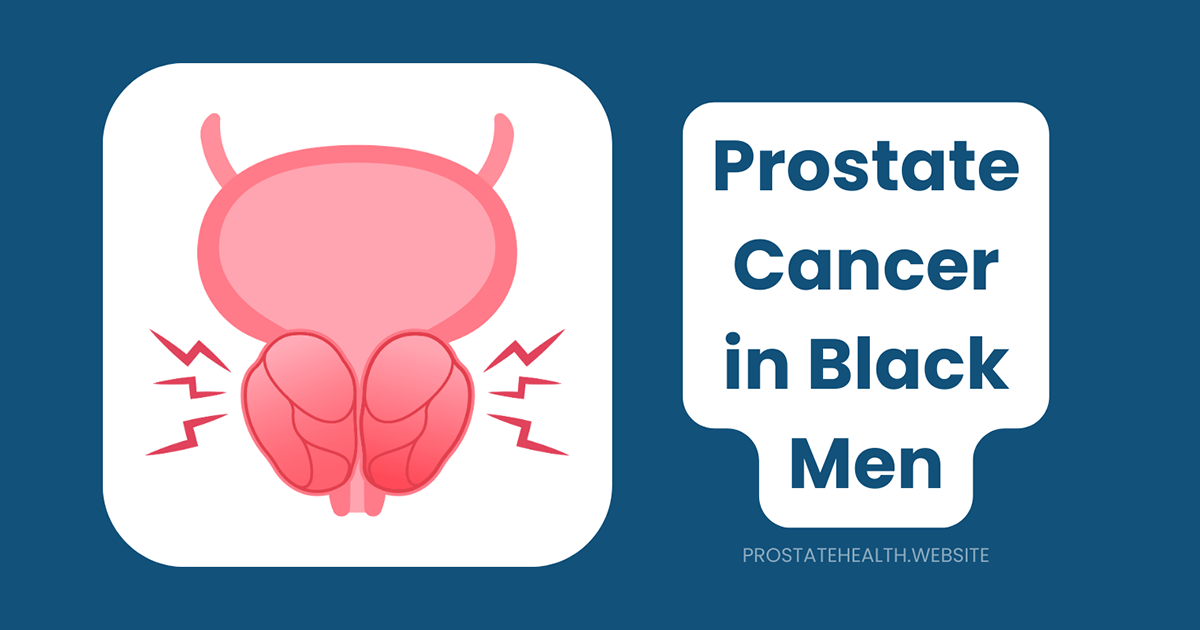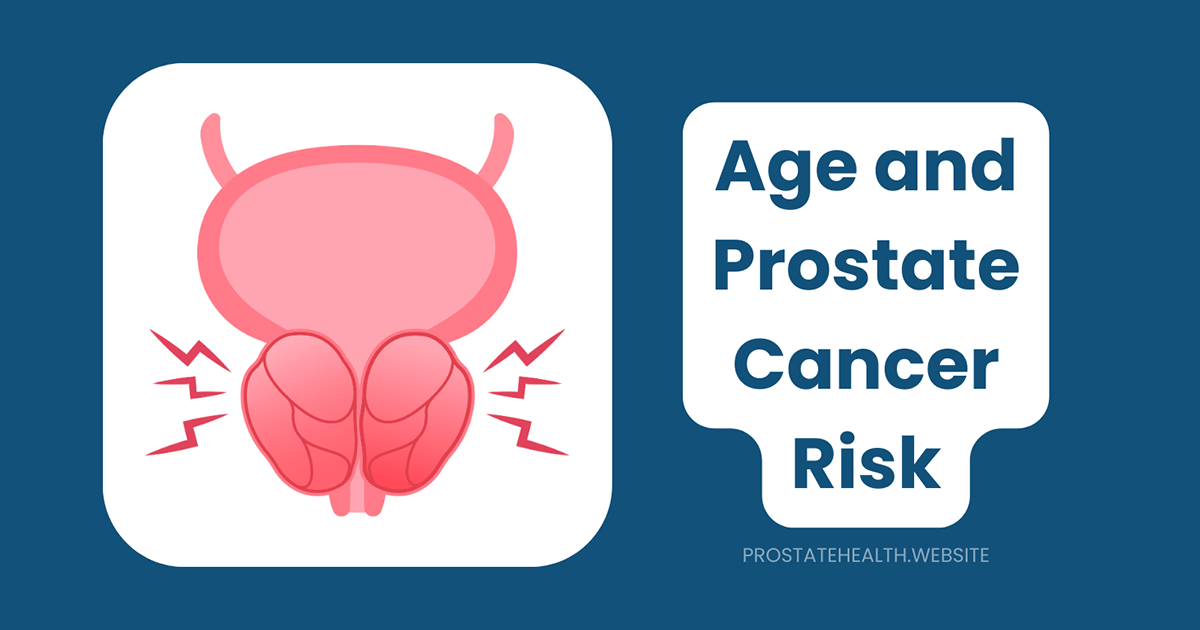Racial Disparities in Prostate Cancer: Understanding Higher Risks for Black Men

Prostate cancer doesn’t affect all men equally. For Black men in America, the statistics tell a sobering story: they are approximately 1.7 times more likely to be diagnosed with prostate cancer and 2.1 times more likely to die from the disease compared to their white counterparts. These stark disparities represent one of the most significant racial gaps in any major cancer type.
But statistics only tell part of the story. Behind these numbers are complex interactions between biology, genetics, healthcare access, socioeconomic factors, and systemic inequities that collectively contribute to this troubling health disparity.
In this comprehensive guide, we’ll explore the multifaceted reasons for these disparities and, most importantly, discuss what can be done to address them—empowering Black men with knowledge that could save lives.
The Scope of the Disparity: Understanding the Numbers
Recent data from the American Cancer Society’s 2025 report on cancer statistics for Black Americans reveals the magnitude of the disparity:
- Black men are projected to have 129,080 new invasive cancer diagnoses in 2025, with prostate cancer accounting for a staggering 44% of these cases
- One in six Black men will develop prostate cancer in his lifetime, compared to one in eight men in the general population
- Despite a 49% decline in overall cancer mortality among Black men from 1991 to 2022, significant disparities in prostate cancer outcomes persist
- Black men are slightly more likely than white men to be diagnosed with advanced prostate cancer, when treatment options are more limited and outcomes less favorable
Dr. James Wilson, oncologist at University Medical Center, explains: “These statistics aren’t just numbers—they represent fathers, brothers, sons, and friends whose lives are affected by this disease. Understanding the scope of the disparity is the first step toward addressing it.”
The Complex Causes: Why Do These Disparities Exist?
The racial disparities in prostate cancer stem from a complex interplay of factors. Let’s examine each of these contributing elements:
Biological and Genetic Factors
Research has identified several biological differences that may contribute to higher prostate cancer risk and potentially more aggressive disease in Black men:
Genetic Variants and Molecular Differences
A 2025 study published in Science Direct identified over 2,500 differentially expressed genes between African American and Caucasian prostate cancer samples. These unique molecular signatures indicate distinct immune response pathways and genetic variants that may influence how prostate cancer develops and progresses in Black men.
Specific genetic variants identified in African American patients include mutations in genes such as TP73, XYLB, ALDH4A1, PTPRB, and HLA-DRB5. Additionally, research has found:
- Different patterns of androgen receptor signaling
- Lower occurrence of certain gene fusions (TMPRSS2-ETS) and deletions (PTEN) compared to white men
- Increased alterations in genes like SPOP, CHD1, and FOXA1
Dr. Sarah Williams, genetic researcher specializing in cancer disparities, notes: “These molecular differences suggest that prostate cancer may develop and progress through somewhat different biological pathways in Black men. This has implications not only for risk assessment but potentially for treatment approaches as well.”
Hormonal Differences
Some studies suggest differences in testosterone metabolism and androgen receptor activity between racial groups:
- Black men may have higher testosterone levels on average
- Differences in how testosterone is metabolized and utilized in prostate tissue
- Variations in androgen receptor sensitivity
However, Dr. Robert Chen, endocrinologist, cautions: “While hormonal differences exist, they likely explain only a small portion of the disparity. The interplay between hormones and environmental factors is complex and still being studied.”
Social Determinants of Health
While biological factors play a role, research increasingly points to social determinants of health as primary drivers of the disparity:
Healthcare Access and Insurance Status
Limited access to quality healthcare significantly impacts prostate cancer outcomes:
- In 2023, 8% of Black Americans were uninsured, compared to 5% of white Americans
- Black men are less likely to live near healthcare centers of excellence
- Transportation barriers can make it difficult to access screening and treatment
- Lack of paid sick leave may prevent some men from seeking preventive care
Socioeconomic Factors
Economic inequality contributes substantially to cancer disparities:
- 18% of Black Americans lived below the federal poverty level in 2023, compared to 8% of white Americans
- Lower income is associated with reduced access to preventive care
- Financial barriers may delay diagnosis and treatment
- Living in food deserts may impact overall health, potentially affecting cancer progression
Structural Racism and Healthcare Bias
Systemic inequities in healthcare delivery affect screening, diagnosis, and treatment:
- Black men are less likely than white men to be offered PSA testing
- Studies show Black men are more likely to experience delays in treatment after diagnosis
- Implicit bias among healthcare providers may affect quality of care
- Historical mistreatment has led to mistrust of the healthcare system among some Black communities
Dr. Michael Chen, public health researcher, emphasizes: “A 2025 study by Dr. Firas Abdollah found that when accounting for other causes of mortality and ensuring equal access to care, prostate cancer-specific mortality rates were essentially equal between Black and white men. This strongly suggests that healthcare disparities, rather than biological differences, are the primary drivers of the mortality gap.”
Screening and Early Detection: Critical for Reducing Disparities
Early detection is one of the most powerful tools for addressing prostate cancer disparities. For Black men, specialized screening recommendations reflect their higher risk:
Current Screening Guidelines for Black Men
Major medical organizations have developed specific screening recommendations for Black men:
- American Cancer Society: Begin discussions about prostate cancer screening at age 45 for Black men without a family history, or at age 40 with a family history
- American Urological Association: Consider baseline screening for Black men starting at age 40
- National Comprehensive Cancer Network: Begin screening for Black men at age 40
Standard screening methods include:
- PSA (Prostate-Specific Antigen) blood test: Measures a protein produced by the prostate that may be elevated in cancer
- Digital Rectal Examination (DRE): Physical examination to check for prostate abnormalities
Barriers to Screening
Despite these recommendations, several barriers prevent optimal screening rates among Black men:
- Lack of awareness: Many men are unaware of their higher risk or the screening guidelines specific to Black men
- Limited healthcare access: Without regular primary care, opportunities for screening discussions are missed
- Mistrust of medical system: Historical abuses have created lingering mistrust in some communities
- Masculinity norms: Cultural attitudes about masculinity may discourage some men from seeking preventive care
- Fear and stigma: Concerns about the screening process or potential diagnosis can deter participation
Dr. Wilson notes: “One troubling finding is that Black men are less likely to be offered PSA testing and more likely to be told that the benefits are uncertain. This represents a clear disparity in how screening information is communicated.”
Treatment Disparities: From Diagnosis to Survival
Disparities continue beyond screening and diagnosis, affecting treatment decisions and outcomes:
Differences in Treatment Patterns
Research has identified concerning patterns in how prostate cancer is treated across racial groups:
- Black men are less likely to receive definitive treatment for early-stage disease
- When treatment is received, there are often delays between diagnosis and treatment initiation
- Black men are less likely to receive newer, more advanced treatments
- Participation in clinical trials remains disproportionately low among Black men
A recent study found that African American men diagnosed with early-stage prostate cancer were less likely than white men to receive any type of treatment for their cancer. This treatment gap contributes significantly to mortality differences.
Equal Care, Equal Outcomes?
Importantly, research suggests that when Black men receive equal access to care, outcomes improve dramatically:
- Studies in equal-access systems like the Veterans Affairs healthcare system show smaller disparities in outcomes
- A 2025 JAMA Network Open study found that Black patients with nonmetastatic prostate cancer have similar prostate cancer-specific mortality to white patients when adjusted for nonbiological factors such as access to care
- The same study found that among patients treated for prostate cancer with curative intent, Black patients had an 11% lower risk of developing metastasis compared to white patients
These findings strongly suggest that equitable healthcare access could substantially mitigate racial disparities in prostate cancer outcomes.
Genetic Testing and Precision Medicine: Addressing the Research Gap
Advances in genetic testing and precision medicine offer promising approaches to reducing disparities, but challenges remain:
The Importance of Diverse Research Participation
Historically, Black men have been underrepresented in prostate cancer research:
- Clinical trials often have low participation rates from Black patients
- Genomic databases used to develop precision medicine approaches lack diversity
- Black patients are less likely to undergo tumor genomic profiling for metastatic prostate cancer
This lack of representation means that research findings and resulting treatments may not be optimally effective for Black men.
Emerging Research and Targeted Approaches
Despite these challenges, promising research is underway:
- Studies are identifying specific genetic markers that may help predict aggressive disease in Black men
- Research into how prostate cancer treatments may affect different racial groups differently
- Development of risk assessment tools that better account for race-specific risk factors
Dr. Williams explains: “As we develop more personalized approaches to prostate cancer treatment, it’s absolutely critical that Black men are included in research. Without this representation, precision medicine risks widening rather than narrowing disparities.”
Community-Based Approaches: Meeting Men Where They Are
Effective interventions to reduce prostate cancer disparities often involve community-based approaches:
Successful Intervention Models
Several programs have shown promise in increasing awareness and screening rates:
- Barbershop health programs: Using trusted community spaces to provide education and screening
- Faith-based initiatives: Partnering with churches to reach Black men with health information
- Peer navigation: Training community members to help others navigate the healthcare system
- Community health workers: Providing culturally competent education and support
The Power of Representation
Having diverse healthcare providers and educators can make a significant difference:
- Black men may be more comfortable discussing sensitive health issues with providers who look like them
- Culturally competent care that acknowledges specific concerns and experiences
- Role models who demonstrate the importance of prostate health
Dr. Chen notes: “When health information comes from trusted sources within the community, it’s more likely to be received and acted upon. That’s why community-based approaches are so powerful.”
Taking Action: What Black Men Can Do
While systemic changes are needed to address disparities fully, there are important steps Black men can take to protect their health:
Know Your Risk and Screening Timeline
Understanding personal risk is the first step:
- Family history: Having a father or brother with prostate cancer further increases risk
- Age: Risk increases significantly after age 40 for Black men
- Screening timeline: Begin discussions about screening at age 45, or age 40 with family history
Be Proactive About Healthcare
Taking an active role in healthcare decisions is crucial:
- Establish a relationship with a primary care provider
- Specifically ask about prostate cancer screening
- Bring up family history during medical appointments
- Seek second opinions when necessary
- Consider finding a doctor experienced in treating Black men with prostate cancer
Lifestyle Factors That May Help
While lifestyle changes can’t eliminate risk, they may help reduce it:
- Diet: Emphasize fruits, vegetables, whole grains, and limit processed foods
- Exercise: Maintain regular physical activity
- Weight management: Maintain a healthy weight
- Limit alcohol: Excessive alcohol consumption may increase cancer risk
Become an Advocate
Advocacy can drive systemic change:
- Participate in community education efforts
- Consider joining prostate cancer clinical trials if eligible
- Share knowledge with family members and friends
- Support organizations working to reduce health disparities
The Path Forward: Systemic Changes Needed
Addressing prostate cancer disparities fully will require systemic changes:
Healthcare Policy and Access
Policy changes that could help reduce disparities include:
- Expanded healthcare coverage to ensure all men have access to screening and treatment
- Increased funding for community health centers serving Black communities
- Coverage mandates for prostate cancer screening for high-risk populations
- Patient navigation programs to help men access and complete treatment
Research and Clinical Trials
Improvements in research approaches are essential:
- Increased funding for research focused on prostate cancer in Black men
- Requirements for diverse participation in clinical trials
- Development of risk assessment tools that better account for race
- Research into the effectiveness of treatments specifically in Black populations
Medical Education and Training
Changes in how healthcare providers are trained could help address disparities:
- Increased education about racial disparities in prostate cancer
- Training in cultural competence and addressing implicit bias
- Efforts to increase diversity in the healthcare workforce
- Continuing education requirements on health equity
The Bottom Line: Knowledge, Access, and Advocacy
The racial disparities in prostate cancer represent a complex public health challenge with no single solution. Addressing these disparities requires a multifaceted approach that includes:
- Increasing awareness among Black men about their higher risk
- Ensuring equitable access to screening, diagnosis, and treatment
- Addressing social determinants of health that contribute to disparities
- Including diverse populations in research and clinical trials
- Developing culturally appropriate interventions and education
Dr. Wilson emphasizes: “What gives me hope is that when Black men receive equal access to care, their outcomes improve dramatically. This tells us that these disparities aren’t inevitable—they’re addressable through systemic changes and individual empowerment.”
By understanding the factors that contribute to higher prostate cancer risk and taking proactive steps to address them, Black men can protect their health and potentially help close this troubling disparity gap.






